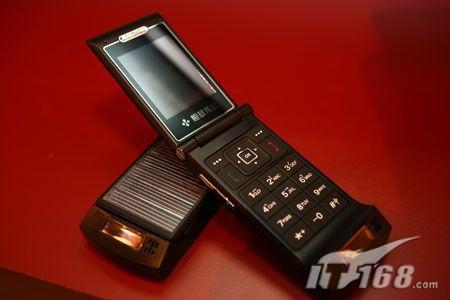[Figure] The world's first solar energy applied mobile phone by Hi-Tech Weiyeh goes off the production line
On March 26, CCTV's Economic Channel program "Living 315" aired an episode titled "The Secret of the Smokeless Pan," which stripped away the false claims of Master Hu's so-called truly smokeless and non-stick pan — the first of its kind in the global market. Recently, Hengji Weiye has been aggressively promoting its "solar-powered phone" named "Chang," claiming it to be self-developed and the world's first such device. The company also stated that it would lead domestic phones into a "blue ocean" strategy, escaping the "red ocean" of homogenization and price wars. Furthermore, Hengji Weiye explicitly mentioned that the "Chang" phone not only solves issues of short standby times and inconvenient charging but also benefits the environment by reducing pollution. Even more astonishingly, they claimed it could save 8% of the electricity used by the Gezhouba Dam!
Hengji Weiye's promotion for the "solar-powered phone" indeed stirs excitement among consumers, much like their previously famous "Businesscom Invisible Phone," which gained immense popularity through TV direct sales across the country. However, I am skeptical about whether this technology is truly self-developed by Hengji Weiye, whether the "solar-powered phone" is practical, and whether "Chang" will become another money-making tool via TV direct sales after the invisible phone.
**Who owns the patent for solar-powered phone technology?**
"If more people view the birth of the 'solar-powered phone' as a delightful 'surprise,' its creation was not accidental but rather a natural result of Hengji Weiye's long-term commitment to innovation." This is how Hengji Weiye praised its "Chang" phone.
In 2003, BYD Group applied for a patent named "Solar Mobile Phone Battery Component" with the patent number CN03226385.6. The function description was as follows:
A solar mobile phone battery component. It includes a housing, inside which a lithium battery is installed. The lithium battery is connected to a battery protection circuit board. On the housing, there is also a crystalline silicon solar cell. The output end of the solar cell is connected to the battery protection circuit board and the lithium battery. The solar cell is first connected to the battery protection circuit board, then connected to the mobile phone lithium battery via the protection circuit board. Additionally, 2-4 supplementary solar cells can be added along with installation angle adjustment rods. The solar cell is installed on the inner surface of the housing. This invention provides excellent safety performance, extends the lifespan of the mobile phone lithium battery, greatly reduces charging time, and is economical and practical.
The working principle of the "solar-powered phone" was introduced as follows: The "Chang" solar-powered phone applies the latest solar technology (including 10 patents owned by Hengji Weiye). The outer surface of the flip cover, measuring 47.6x84x0.8mm, is entirely covered by a solar cell, which can charge the lithium battery at any time. It achieves this by attaching a layer of monocrystalline silicon photovoltaic conversion chip to the back of the lithium battery. The current generated when the monocrystalline silicon is exposed to light passes through the protection circuit and charges the lithium battery.
From this technology, the most critical part is "the housing also has a crystalline silicon solar cell," and we surprisingly find that the charging technology used in Hengji Weiye's solar-powered phone is almost identical to BYD's battery charging technology. Is the technology used by Hengji Weiye its own patent? Could this lead to legal disputes between Hengji Weiye and BYD?
